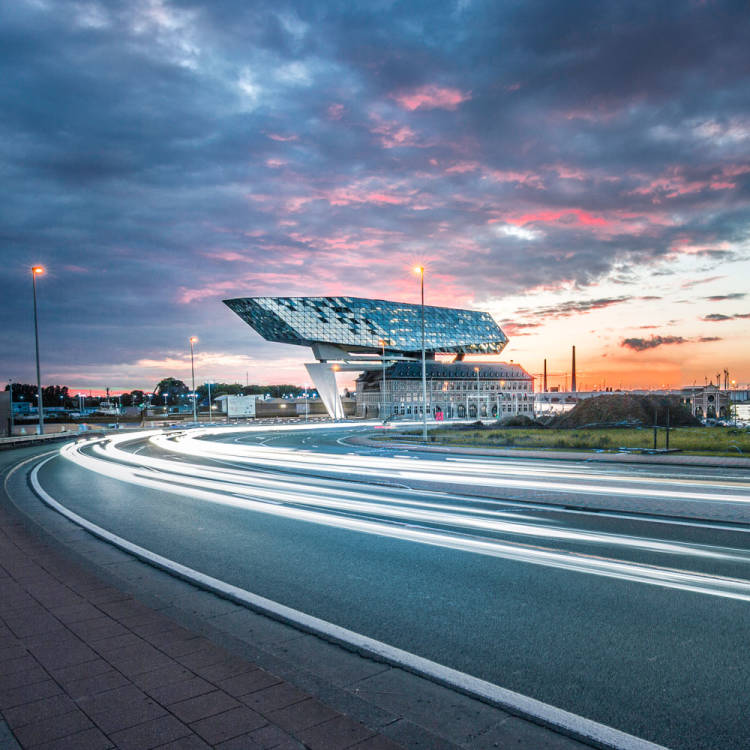
NEW MOBILITY LIFESTYLES
- Develop new and strengthen existing mobility concepts and solutions to reduce the use of and the space for cars.
- Change mobility behaviour in favour of collective and more active passenger transport for citizens, commuters and tourists.
- Identify collective, active and intermodal mobility solutions for specific target groups (commuters, mobility-deprived users, tourists) to enable them to reach the activities they need to get to.
- Work inside the communities to fully understand the mobility needs and mind-sets of people.
- Target flows between the city and the port, as well as the city centres and hinterlands.
- Streamline and coordinate the allocation of public and road space for pedestrians, cyclists and collective transport.
FACTSHEET 02
FOR PORT CITIES
Results, findings & lessons learned
More info
|
|
Context & challenges
CONTEXT & CHALLENGES
The measures of this work package focused on :
• Encouraging cycling: The port and city invested in hard infrastructure, but also the development of new transport modes (cycle bus, waterbus) and the expansion of existing concepts (Velo network) in order to increase the comfort for cyclists and thus increase the modal share of cycling further.
• Integrating the collective transport network: An important part of the Masterplan 2020 was to extend the tram network to the northern city area (“Noorderlijn”) where the city and the port meet, to encourage a modal shift towards more sustainable transport modes. At the same time, the use of the railroad network around Antwerp was further increased, by increasing the frequency. A combined product of the local public transport network (De Lijn) and the national railroad network was launched to make public transport more competitive. In the port, the authorities invested in an extension of an existing collective transport offer (“Pendelbus”) and worked together with several stakeholders (labour unions, companies) to streamline the existing offer of private collective transport lines to an efficient system.
• Raising awareness: In order to maximize the impact of before mentioned measures, and to achieve the behavioural change, investing in awareness raising is a key element. The city and port developed several campaigns and promoted each other’s tools such as the Smart Ways to Antwerp platform and multimodal travel planner.
• Developing event and commuter travel plans: The city hosts a lot of events. Antwerp is a central point in the EU, making it an interesting location for international companies to have a hub. The city developed tailor made multimodal mobility guides for events and monitored the modal share of visitors. Towards companies, the city continued to provide tailor-made advice for commuter travel plans and products for companies to use to achieve the behavioural change and modal shift.
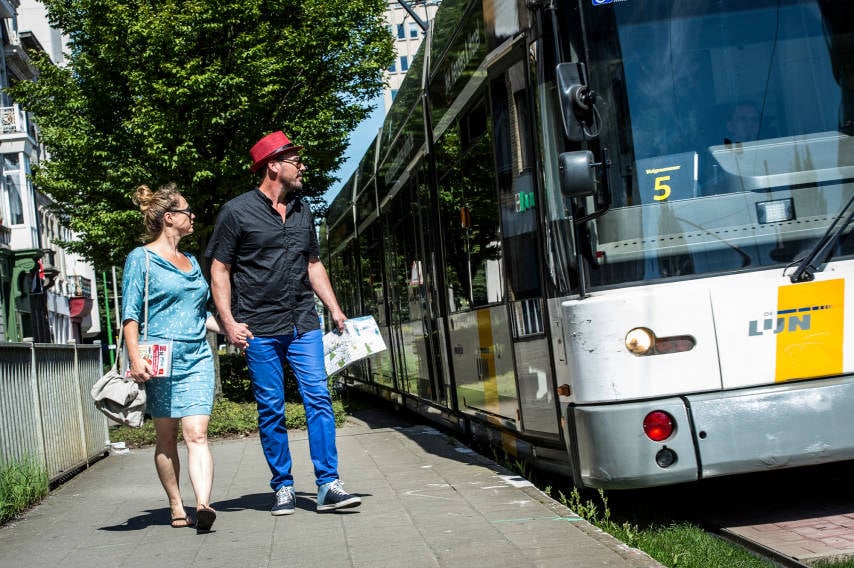

& LESSONS LEARNED
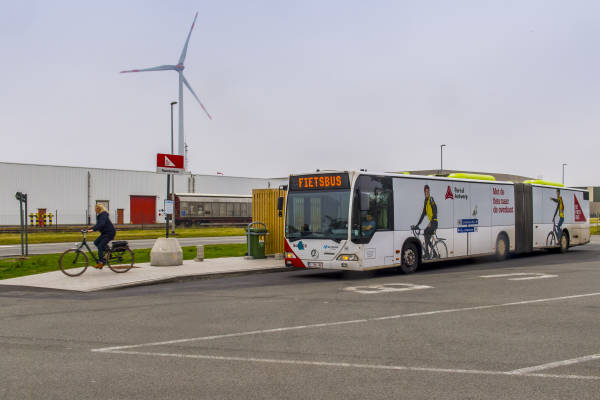


In 2016, the modal share of car use on commuting trips among city inhabitants was 49.6%. in 2019, this has dropped to 41.7%. The opposite evolution is visible for the modal share of cycling in commuting trips: in 2016, 27.6% cycled to work. In 2019, more than 35% uses the bike as a transport mode to commute. Public transport has declined a little: from 16% in 2014 to 14.3%. During the PORTIS project, the modal share of cycling in the port jumped from 6% to 16%; the modal share of collective transport is 6%. Nevertheless, there is still room for improvement. The measures are not ending when PORTIS ends but are going to be further implemented and improved.
• Lessons learned 1: Thanks to the increased cooperation between the city, port, companies and other stakeholders, actions are reinforced and policies are aligned; leading to even better results. Furthermore, a wider audience is reached with raising awareness campaigns.
• Lessons learned 2: Different cycling measures together can bring about a major change in modal shift for cycling when combined. Thus, they need to be incorporated in the policy vision of a city.
• Lessons learned 3: Pilot projects are a very good way for ‘trial and error’. At the same time, support is created among several stakeholders, such as the port companies but also employees.
• Lessons learned 4: Continuous monitoring of results is necessary, to adapt projects, but also to guarantee financing for the future.
• Lessons learned 5: The campaigns provided by both port and city served as an enabler for people to make the modal shift. Large campaigns and repetition are needed to reach success in achieving long term behavioural change.
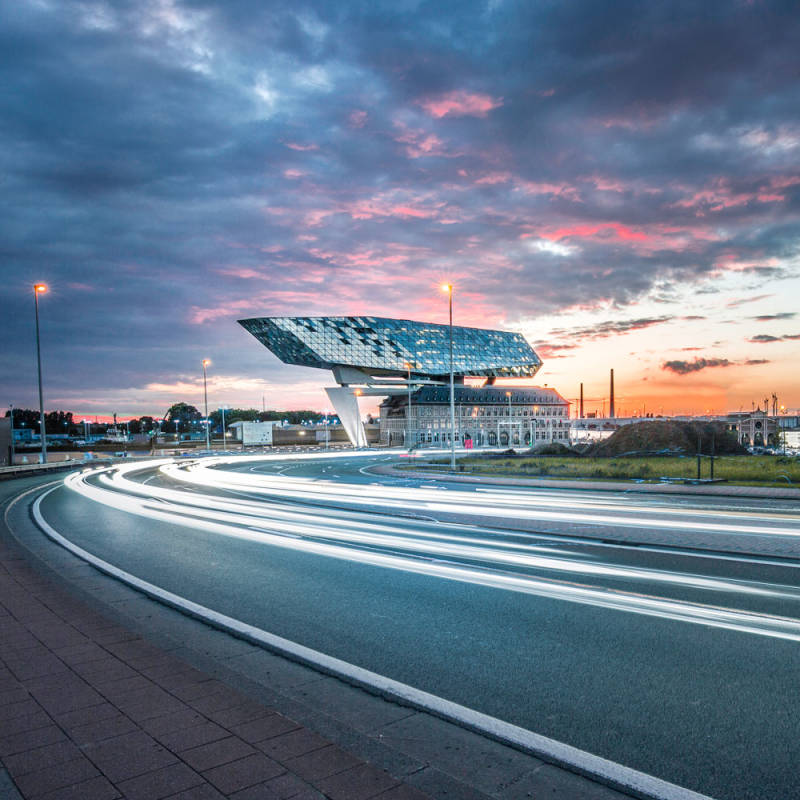
www.slimnaarantwerpen.be
www.portofantwerp.com
More info about CIVITAS PORTIS
can be found on the website civitas.eu/portis

- Develop new and strengthen existing mobility concepts and solutions to reduce the use of and the space for cars.
- Change mobility behaviour in favour of collective and more active passenger transport for citizens, commuters and tourists.
- Identify collective, active and intermodal mobility solutions for specific target groups (commuters, mobility-deprived users, tourists) to enable them to reach the activities they need to get to.
- Work inside the communities to fully understand the mobility needs and mind-sets of people.
- Target flows between the city and the port, as well as the city centres and hinterlands.
- Streamline and coordinate the allocation of public and road space for pedestrians, cyclists and collective transport.
NEW MOBILITY LIFESTYLES
FOR PORT CITIES
FACTSHEET 02
Results, findings & lessons learned
More info
Context & challenges
CONTEXT & CHALLENGES
The measures of this work package focused on :
• Encouraging cycling: The port and city invested in hard infrastructure, but also the development of new transport modes (cycle bus, waterbus) and the expansion of existing concepts (Velo network) in order to increase the comfort for cyclists and thus increase the modal share of cycling further.
• Integrating the collective transport network: An important part of the Masterplan 2020 was to extend the tram network to the northern city area (“Noorderlijn”) where the city and the port meet, to encourage a modal shift towards more sustainable transport modes. At the same time, the use of the railroad network around Antwerp was further increased, by increasing the frequency. A combined product of the local public transport network (De Lijn) and the national railroad network was launched to make public transport more competitive. In the port, the authorities invested in an extension of an existing collective transport offer (“Pendelbus”) and worked together with several stakeholders (labour unions, companies) to streamline the existing offer of private collective transport lines to an efficient system.
• Raising awareness: In order to maximize the impact of before mentioned measures, and to achieve the behavioural change, investing in awareness raising is a key element. The city and port developed several campaigns and promoted each other’s tools such as the Smart Ways to Antwerp platform and multimodal travel planner.
• Developing event and commuter travel plans: The city hosts a lot of events. Antwerp is a central point in the EU, making it an interesting location for international companies to have a hub. The city developed tailor made multimodal mobility guides for events and monitored the modal share of visitors. Towards companies, the city continued to provide tailor-made advice for commuter travel plans and products for companies to use to achieve the behavioural change and modal shift.
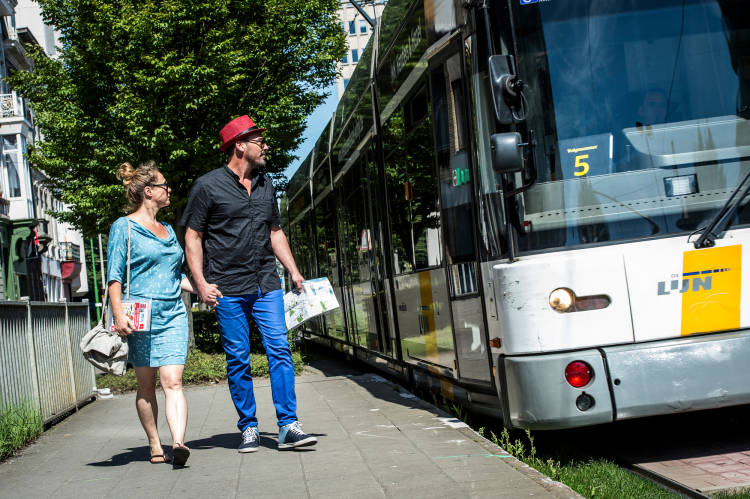

& LESSONS LEARNED
In 2016, the modal share of car use on commuting trips among city inhabitants was 49.6%. in 2019, this has dropped to 41.7%. The opposite evolution is visible for the modal share of cycling in commuting trips: in 2016, 27.6% cycled to work. In 2019, more than 35% uses the bike as a transport mode to commute. Public transport has declined a little: from 16% in 2014 to 14.3%. During the PORTIS project, the modal share of cycling in the port jumped from 6% to 16%; the modal share of collective transport is 6%. Nevertheless, there is still room for improvement. The measures are not ending when PORTIS ends but are going to be further implemented and improved.
• Lessons learned 1: Thanks to the increased cooperation between the city, port, companies and other stakeholders, actions are reinforced and policies are aligned; leading to even better results. Furthermore, a wider audience is reached with raising awareness campaigns.
• Lessons learned 2: Different cycling measures together can bring about a major change in modal shift for cycling when combined. Thus, they need to be incorporated in the policy vision of a city.
• Lessons learned 3: Pilot projects are a very good way for ‘trial and error’. At the same time, support is created among several stakeholders, such as the port companies but also employees.
• Lessons learned 4: Continuous monitoring of results is necessary, to adapt projects, but also to guarantee financing for the future.
• Lessons learned 5: The campaigns provided by both port and city served as an enabler for people to make the modal shift. Large campaigns and repetition are needed to reach success in achieving long term behavioural change.


www.slimnaarantwerpen.be
www.portofantwerp.com
More info about CIVITAS PORTIS
can be found on the website civitas.eu/portis
